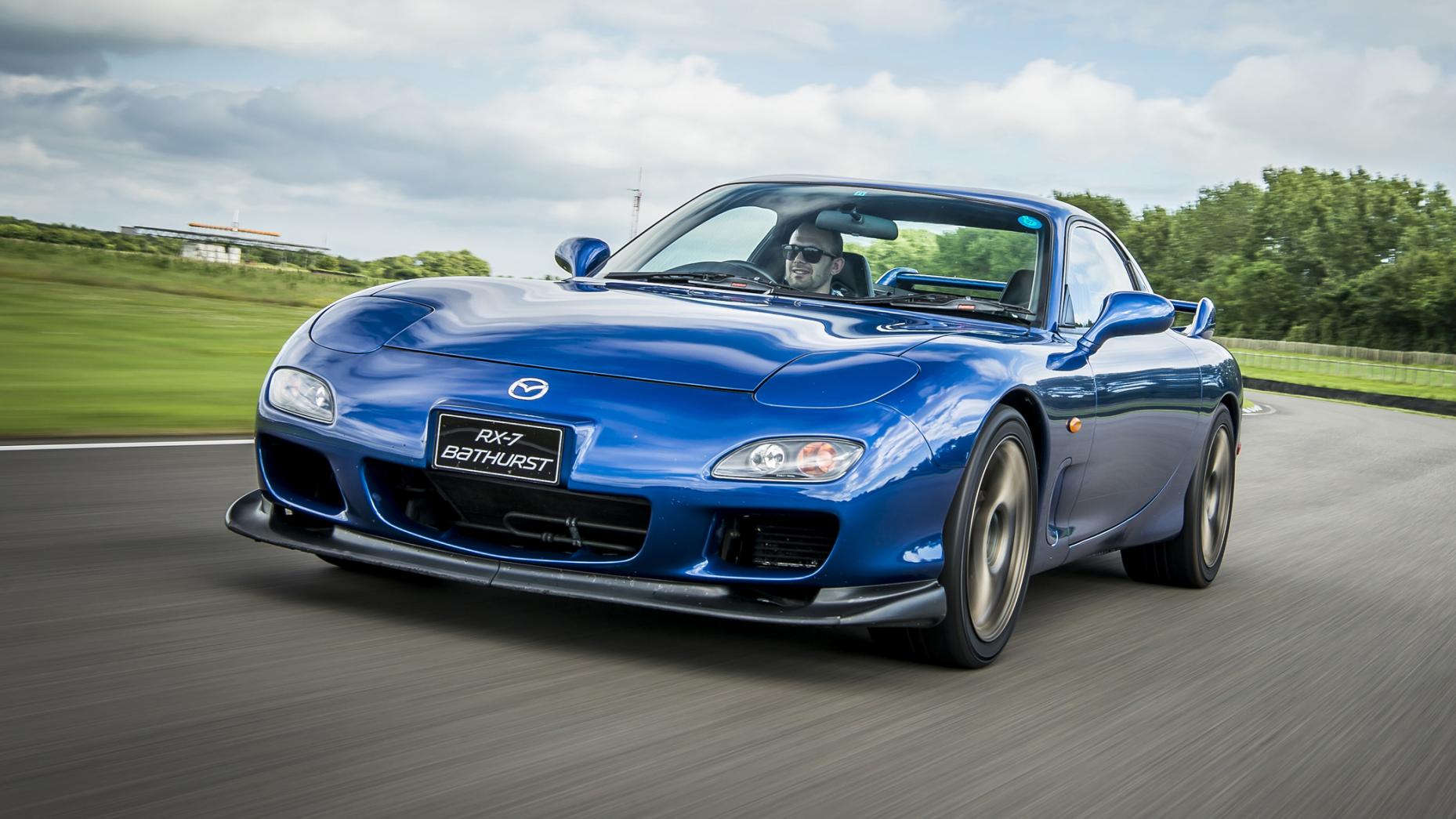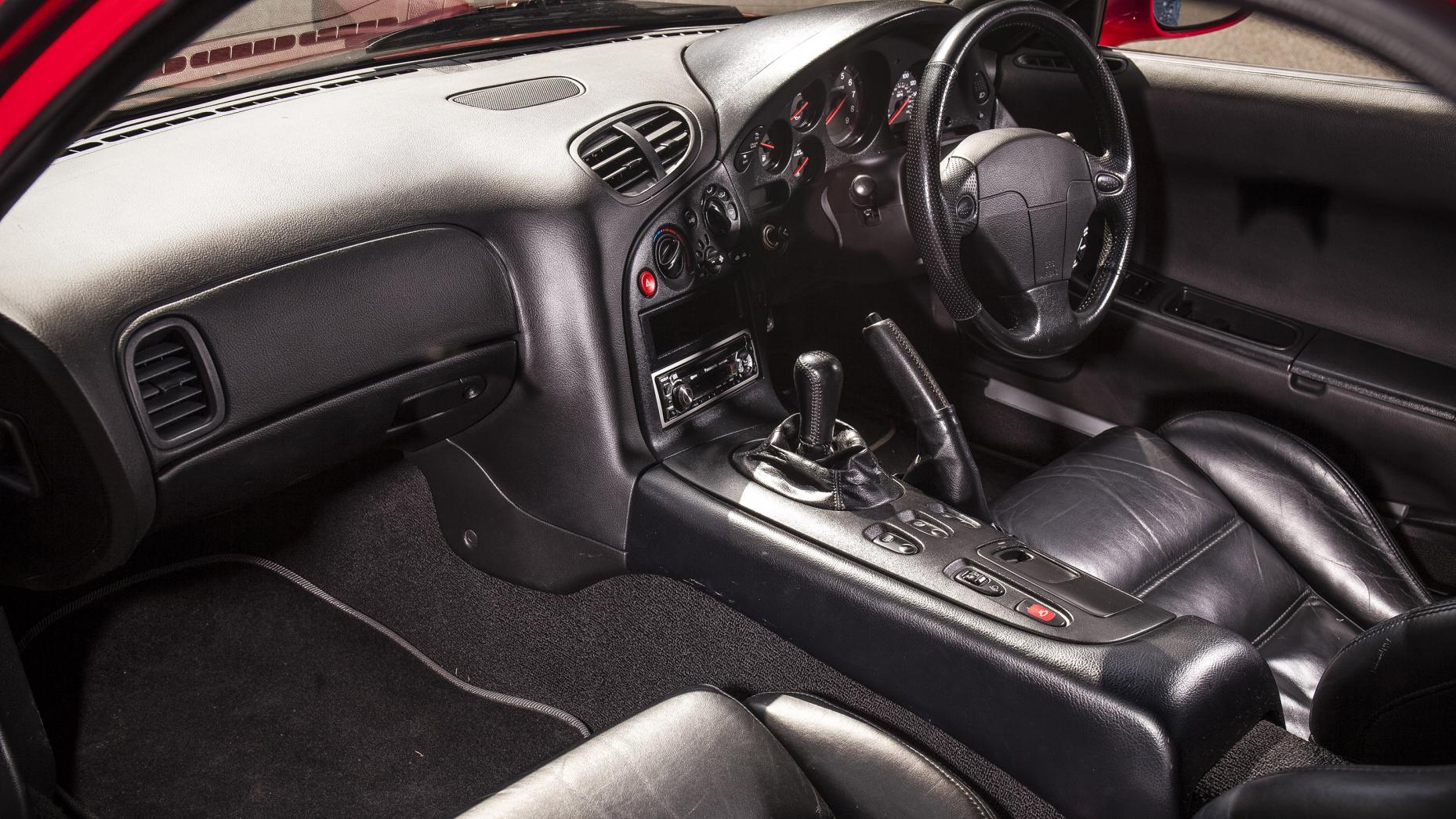
Here’s a car that needs little introduction. Though 100 I-Spy points if you’ve seen one that looks like this recently. Word on the street is that 90 per cent of FD-generation Mazda RX-7s have been tuned to some degree, and we’d be amazed if the last one you saw didn’t wear at least some semblance of body kit. Be it painted the colour of the shell or resplendent in lovely mid-modification primer…
The RX-7 badge dates back to 1978, but it’s the third-generation FD - introduced in 1991 - that is most famous. And it still looks damn good today, its shape as fresh and as clean as when it launched. Well, mod-dependent.
You may know it nominally well from Fast and the Furious movies or Gran Turismo. Or both. So why not gen up on the most famous RX-7 of them all a little more?
The turbos work sequentially
The RX-7 utilised the world’s first mass-produced sequentially turbocharged engine. If you’re craving that in plain English, there are two turbos but they work separately, in steps, rather than punching more air into the engine together.
So the first kicks in from 1,800rpm, before the second takes over at 4,000rpm. The handover is impressively smooth and overall, power delivery doesn’t feel worlds apart from modern turbocharged cars.
Sounds clever and meticulously developed, huh? Well anyone seeking big power from their tuned RX-7 tuner car tends to ditch the sequential set-up in favour of something with more clout. Shame.
The standard car's a bit of a softy
With its engine so smooth, there’s way more refinement here than you might expect. There are GT car genes here: squashy seats rather than body-hugging buckets and despite having only five gears, it’s quiet on a motorway cruise, feeling barely in its stride at 70mph.
Get to your favourite piece of road and it initially feels less sharp than you’d hope. There’s body roll when you start to push, the car leaning this way and that as the steering weights up. Rather like a modern-day MX-5 in that regard, then.
These are helpful warning signs in an older car, though, one without any modern electronic helpers. Push beyond its inherent softness and the RX-7 can get a little spiky, mainly when it’s wet. But with such modest torque from its wankel engine, its unlikely to give you a scare unless you’re really clumsy.
Japanese market cars had more power
FD RX-7s sold in Britain made 237bhp. You can get that in a VW Tiguan these days, but in the early Nineties it was competitive in the sports car class - a contemporary Porsche 968, Alpine A610 or Jaguar XJS was pegged below 250bhp too. And with the RX-7 weighing just over 1.3 tonnes, it was enough for a 251kph top speed and 0-100kph in 5.1secs.
Overseas, however, that dinky engine breathed just a little more easily, producing around 250bhp in early cars, and the (in)famously limited 276bhp claimed by a raft of Japanese sports cars in later specials like this terrific Type R Bathurst.
UK sales were pitiful
Mazda sold a stonking 70,000 FD-generation RX-7s between 1991 and 2002. Of those, an almost hilariously weeny 0.003 per cent came to the UK. If the numbers rounds are your least favourite section of Countdown, that equates to 210 cars.
Sales stopped on British shores in 1995 owing to the car’s lack of popularity, which goes someway to explain why almost every car you’ll see here will be a square-plated import, usually from Japan.
Many have had their engine rebuilt
Shock! RX-7s fulfil Internet forum stereotype of being mechanically flaky. But only if they’ve been treated with inappropriate levels of respect.
Like any rotary engine, it will drink oil. While Mazda reckons on 500ml per 1,000 miles (1,609km), twice that rate isn’t unusual. It needs topping up with proper mineral oil too, not synthetic or part synthetic alternatives. An oil and filter change should happen every 3,000 miles (4,828km), while awkwardly located fuel filters mean those are often neglected. Rebuilding an RX-7’s engine costs in the region of £3,500 (approx. RM19,007) before VAT, and it’s simply the inevitable conclusion of bad maintenance.
The key when buying one, then, is to research the car in question’s past and question any gap in its service history…
Around 350bhp is the sweet spot
Given the RX-7s slightly aloof nature as standard - particularly in UK spec - its vulnerability to the clutches of tuners is little surprise. But there are ways of doing it subtly if you crave a bit more focus without placing a ticking time-bomb between the dashboard and the front axle.
Cars with up to around 400bhp are relatively reliable, specialists reckon, and you can see 350bhp or so with bolt on parts that don’t require fiddling with the engine block itself.
But you need to watch RX-7s that have been lowered, too. Dropping the ride height can mess with the operation of those ace pop-up lights, while some cars have had the plastic liners removed from their wheel arches, which can lead to moisture getting into the car and damaging its electronics. It’s otherwise way more reliable than the forums would have you believe…








